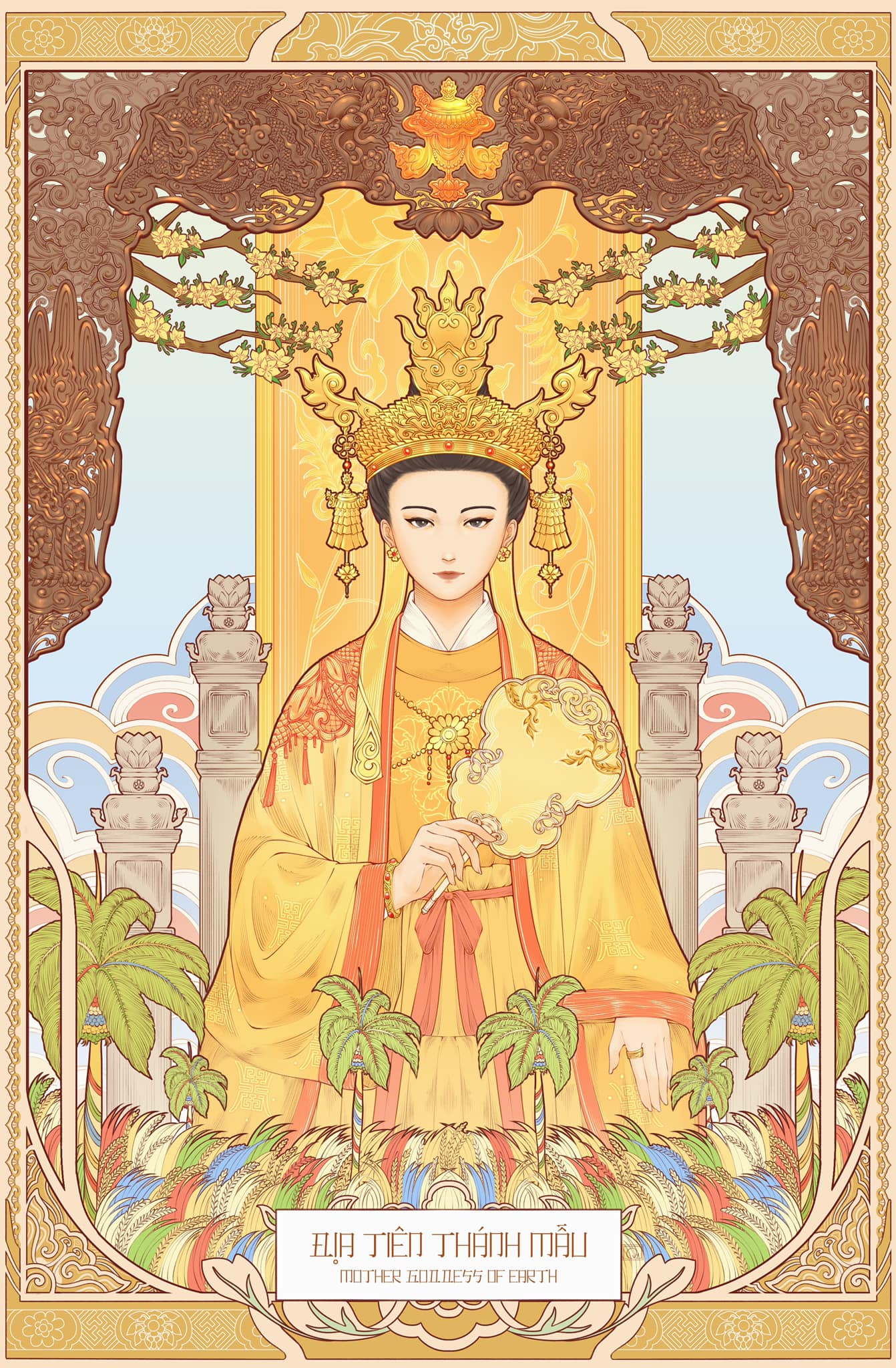
On the occasion of the Full Moon of the Third lunisolar month – the feast month honoring Mother Goddess Liễu Hạnh, we would like to share with you the artwork by Lunae Lumen. This is also the final piece in the four-painting collection of the theme Mother Goddesses commissioned by the project Divine Portraits.
The painting, inspired by the Art-Nouveau style combined with other distinguished characteristics of Vietnamese folk paintings, portrays the Second Mother Goddess of Earth Palace. The theme color is yellow as it is the symbolic color of the Earth Palace.
Since the Mother Goddess governs the Earth Palace, the background features layers and layers of bountiful crops which nourish all humans. Reaching high are the rows of areca trees whose nuts are a Vietnamese traditional delicacy. The devotees offer areca nuts and betel leaves to the deities. This combo also represents the human relationships that are governed by divinity. Behind the Mother Goddess are the auspicious five-colored clouds, representing Her position as a representative of the Heaven Palace on Earth.
Behind the Mother Goddess is a three-opening Ritual Gate, associated with divinity in general. “The four-column Ritual Gate is often associated with the communal house […] With the temple and communal house architecture, the central axis is often called the Holy Path or Spiritual Path. When it comes to the palaces and mansions (Temple of Literature, the Huế Imperial City, Shrine of Emperor Đinh, Shrine of Emperor Lê) […] that road is called Path of Bravery”. The wooden arch frame above Her head is carved with a pair of dragon patterns, in the center is the symbol of the Jeweled Parasol – one of the Buddhist eight treasures. This symbol represents the protection of beings from harmful forces and illness.
Her costumes, in the Lê dynasty’s style, include three layers. The innermost is Giao Lĩnh (crossed-collared robe). The middle layer is Viên Lĩnh (round-collared robe) and Thường wrapping skirts, adorned with a golden flower on a beaded net. The outermost layer is Đối Khâm (parallel-paneled robe) with a lace shoulder cover. Her golden crown is inspired by an ancient Vietnamese statue*. Around the brim are rubies – a famous gem of Vietnam. The two fringes are attached with two golden Victory Banners (another one of the eight Buddhist auspicious symbols). She holds a banana-leaf-shaped fan made from silk showing the artisan’s sophisticated skill.
The inspiration for the costumes is mainly from the book Weaving a Realm by Vietnam Centre.








